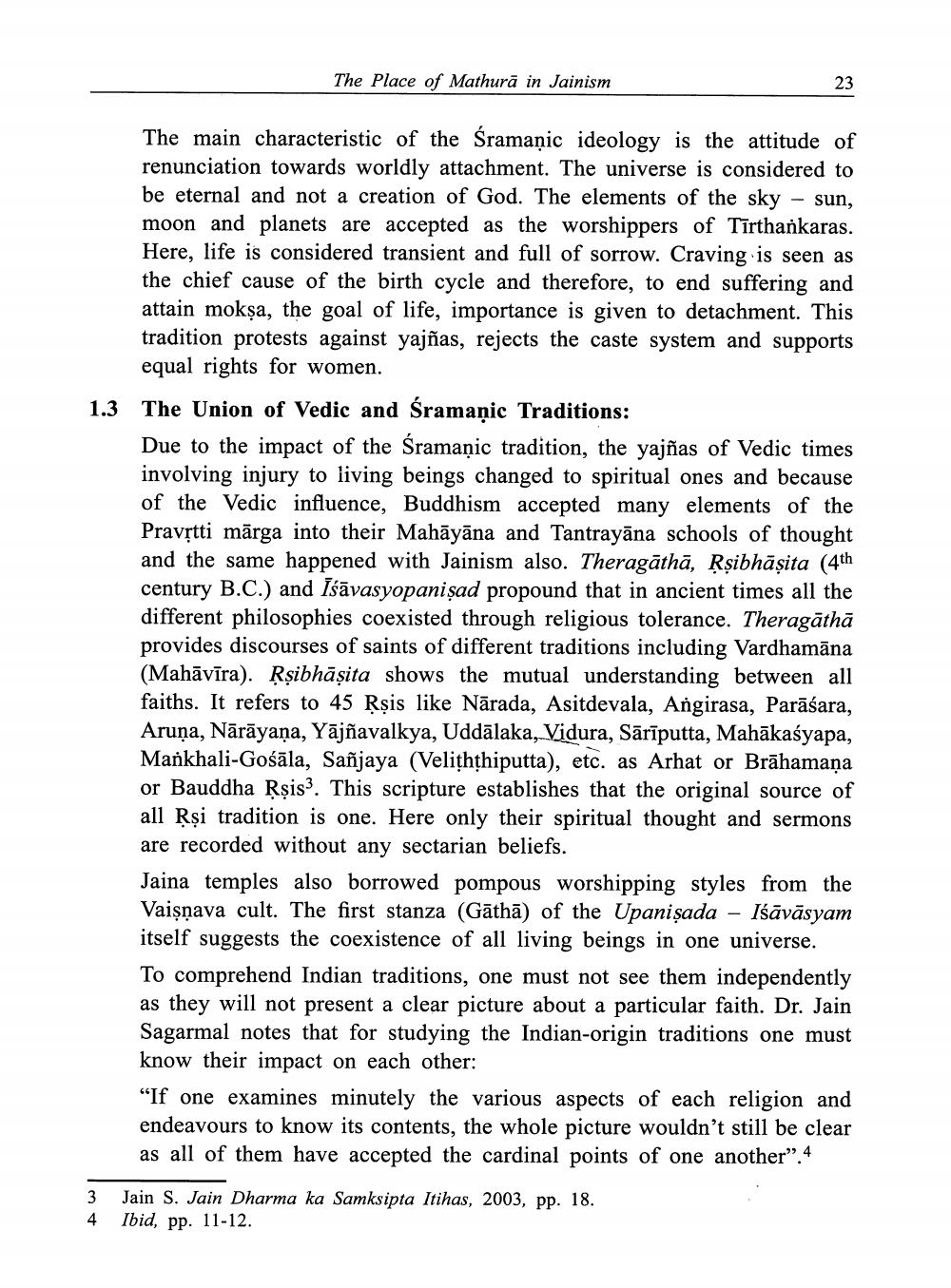________________
The Place of Mathurā in Jainism
The main characteristic of the Sramanic ideology is the attitude of renunciation towards worldly attachment. The universe is considered to be eternal and not a creation of God. The elements of the sky - sun, moon and planets are accepted as the worshippers of Tīrthankaras. Here, life is considered transient and full of sorrow. Craving is seen as the chief cause of the birth cycle and therefore, to end suffering and attain mokşa, the goal of life, importance is given to detachment. This tradition protests against yajñas, rejects the caste system and supports equal rights for women.
1.3
The Union of Vedic and śramaņic Traditions: Due to the impact of the Sramanic tradition, the yajñas of Vedic times involving injury to living beings changed to spiritual ones and because of the Vedic influence, Buddhism accepted many elements of the Pravịtti mārga into their Mahāyāna and Tantrayāna schools of thought and the same happened with Jainism also. Theragāthā, Rşibhāṣita (4th century B.C.) and īśāvasyopanişad propound that in ancient times all the different philosophies coexisted through religious tolerance. Theragāthā provides discourses of saints of different traditions including Vardhamāna (Mahāvīra). Rsibhāsita shows the mutual understanding between all faiths. It refers to 45 Rșis like Nārada, Asitdevala, Angirasa, Parāśara, Aruņa, Nārāyaṇa, Yājñavalkya, Uddālaka, Vidura, Sārīputta, Mahākaśyapa, Mankhali-Gośāla, Sañjaya (Veliththiputta), etc. as Arhat or Brāhamaņa or Bauddha Rşis?. This scripture establishes that the original source of all Rși tradition is one. Here only their spiritual thought and sermons are recorded without any sectarian beliefs. Jaina temples also borrowed pompous worshipping styles from the Vaisnava cult. The first stanza (Gāthā) of the Upani sada - Išāvāsyam itself suggests the coexistence of all living beings in one universe. To comprehend Indian traditions, one must not see them independently as they will not present a clear picture about a particular faith. Dr. Jain Sagarmal notes that for studying the Indian-origin traditions one must know their impact on each other: "If one examines minutely the various aspects of each religion and endeavours to know its contents, the whole picture wouldn't still be clear as all of them have accepted the cardinal points of one another”.4
3 4
Jain S. Jain Dharma ka Samksipta Itihas, 2003, pp. 18. Ibid, pp. 11-12.




